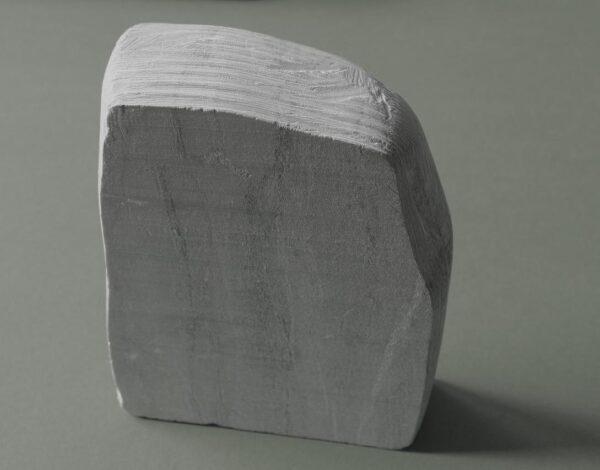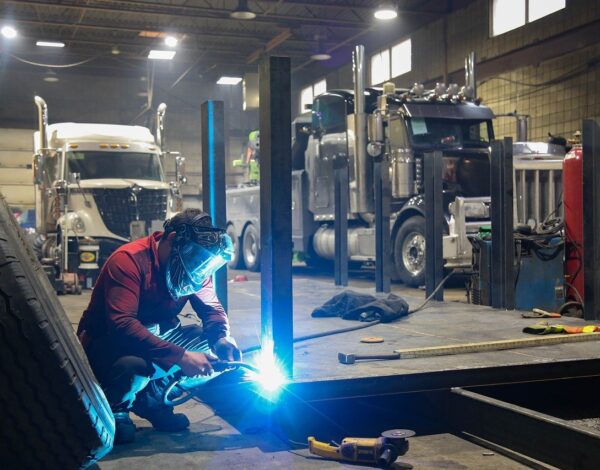

Sharpening up on the Rules of Grinder Safety
Leadership / Products / Safety
When using industrial power tools, the most important thing is to know how to operate them in a safe manner – not only to protect the operator from injury, but the people around them. At Rocky Mountain Air Solutions, we sell a number of industrial grade products such as abrasives, grinders and protective equipment. Each month, we offer a product flyer via mail and on our website that highlights sales and everyday low prices on items like Tillman safety gloves, Flexovit abrasives, and Makita and DeWalt angle grinders. The value of our products does not stop at the time of purchase, but we continue to offer additional support and tips to our customers. At RMA we always promise to deliver flawless dependability, and we strive to bring that to every transaction.
Grinder Safety 101
The first step to grinder safety is always wearing the proper personal protective equipment. The operator and those within close proximity should have a checklist of the following materials:
– Safety glasses
– Safety gloves
– Face shield
– Flame-resistant clothing
– Protective footwear
– Hearing protection
– Respirator
The environment where the application is taking place must be clean, free from combustible liquids or dust, dry, well lit and well ventilated. Everyday workspace hazards include tripping over cords, electrocution and distraction related injuries (specifically regarding cell phones). As always, the operator should be alert and sober while operating high-velocity tools.
Always follow these key safety measures:
– Never feel like you need to “lay on the tool.” If this happens, you are either using the wrong tool, using the wrong abrasive or your tool is beginning to wear-out. Let the tool do the work. User fatigue is the number one cause of accidents when it comes to operating a portable grinder.
– Never leave a tool plugged in when it is not in use. If the tool is cordless, the battery should be disengaged in case the tool accidentally turns on.
– Never use a wheel that has not first been inspected. Wheels always need to be inspected before use to check for any chips or cracks, which could cause flying debris of shrapnel.
– Never “flat grind.” Always maintain an angle of about 30 degrees for type 27 and 28 wheels, and 90 degrees for type 1. Flat grinding reduces performance and can undermine the safety features manufactured into the disc.
– Never use a type 1 to grind at any other angle than 90 degrees. These wheels are used for cutting only. Using them to grind, even for a short grinding action like “deburring,” can cause the wheel to come apart, causing injury.
– Never move a cutting disc laterally. However, it’s impossible to eliminate in difficult work spaces, which is why we offer SAIT products for ultimate safety. SAIT is one of the only abrasive manufacturers who test their products for lateral durability with their exclusive “hammer test.” It’s just another way RMA is looking out for you.
There are many safety features built into grinders that will minimize injury, however, it is still up to the wielder to follow all precautions. Auto-balance and anti-vibration features prevent future nerve damage caused by vibrating grinder handles. This stress on the hands can restrict blood flow to the hands and arms, resulting in chronic pain and numbness. Sometimes handles can feel awkward or uncomfortable, but be assured that the handle is always properly installed for use. The handle should never be taken off of the tool or altered, but there are multi-position handles on the market to solve this issue.
Drop prevention is also an important safety feature to consider when purchasing a grinder. When a grinder is dropped, it can emit 100 times the force per pound. This is why lanyards and tethers are often attached to grinders to prevent them from hitting the ground.
Be careful of grinders that “free spin.” This happens when you have disengaged the trigger, but the abrasive continues to spin. We recommend purchasing a grinder with “built-in braking.” We offer both DeWalt and Makita with this feature standard. The brake on a grinder stops the wheel from continuing to spin without power, making for a much safer work environment.

Choosing the Right Tools
Do you have the right grinder? The areas you are working in can help determine which tools you may need. Tight spots could require a different tool, such as a die grinder or a flat head grinder as opposed to an angle grinder. The type of material you are working with as well as how you want the work piece to look at the end of the project are also factors; as well as how much time you want to spend “grinding and cutting.”
Ask yourself a few questions before operating:
– Do I have the right tool for the application and material?
– Have you “ring-tested” the wheel?
– Have you checked that the wheel is secured to the tool?
– Is the correct guard installed?
– Do the grinder rpm’s and grinding wheel rpm match?
– What result do you want from the tool? High finish? Quick speed? Cleaning? Safety?
Always choose an abrasive which matches the rpm speed of the tool. As an example, never put a 7″ wheel (max rpm of 8500) on a 4.5″ grinder (rpm of 13,000 rpm). The centrifugal force could cause the wheel to come apart and cause a serious injury or damage to the work area.
For a high finish, we recommend using a variable speed grinder like the Makita 9564CV. Heat caused by the grinding action and the speed of the product can create unsightly marks on the work material. By using a variable speed grinder, as well as a product like the SAIT Grind and Finish abrasive, you can virtually eliminate these marks and eliminate steps in your finishing process.
As a rule of thumb, don’t wait until the tool fails before replacing. Performance of a portable grinder decreases over time causing user fatigue, worker inefficiency and safety issues. Plan on testing your tool performance on a quarterly basis. You can schedule to have your tools “tached” by an RMA expert. This important safety inspection can measure your tool performance and rpm speed, alerting you to both safety and performance deficiencies before they become a problem.

The Value of Expert Support
The grinding wheels offered at RMA are appropriate for a number of applications. We even have versatile wheels that are sufficient for most grinding applications. They feature rapid grinding action, sustained wheel life and will save you time and money. We have in-house professionals who can answer questions and help point you in the right direction.
The best way to sharpen up on the rules of grinder safety is to receive training. In the fabrication and welding industries, safely working with a portable grinder is rarely reviewed with employees for performance and safety. RMA offers a comprehensive tool training program for you and your employees.
If you have any questions regarding grinder safety or employee training, contact us today, and view our monthly product flyer to find the latest deals on industrial power tools and abrasives.



